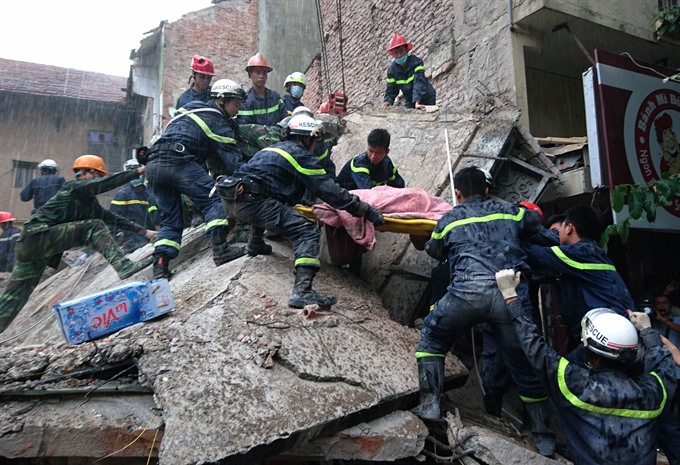 Society
Society

Recent building collapses in Hà Nội resulted from poor management and supervision by the State offices responsible for regulating construction, experts say.
 |
| Concerns over the loosening of urban construction management have risen particularly since the collapse of the house at No 43, Cửa Bắc Street in 2016. — VNS Việt Thanh |
HÀ NỘI — Recent building collapses in Hà Nội resulted from poor management and supervision by the State offices responsible for regulating construction, experts say.
Recent building disasters include the buckling of the third-floor wall of Đồng Tâm Primary School last August and the September 25 collapse of the under-construction Vườn Xanh (Green Garden) Nursery School. According to construction experts, that the main cause of incidents was the loose management of investors, contractors and the construction monitors.
Expert Duy Thành, a member the Hà Nội-based University of Water Resources’ Faculty of Construction, conducted visual observations at the Green Garden site. He noticed that the quality of bonding between floor beams and pillars was poor, resulting in the beams easily breaking down.
Thành said that this problem is foreseeable. But it requires the relevant offices to carefully check all construction design plans and conduct site visits.
Trần Chủng, former director of the State Department for Construction Quality Supervision, at the Ministry of Construction, said that even though the public raises concerns after major collapse events, the State is still not completely effective at regulating construction projects to ensure safety.
The Construction Law of 2014 states clearly that city authorities should halt construction processes if they discover any safety risks to the community.
The law has been strictly followed in some cases. In some urgent situations, for example, for the safety of the people local authorities have taken drastic measures such as blockading unsafe buildings or cutting of its access to electricity and water.
Lawyer Bùi Sinh Quyền, from the Hà Nội Lawyers Association, said that the contractor was responsible for a collapse incident if it occurred during the construction process.
A representative of the construction contractor at Green Gardens, Trần Vũ Trading and Technology Ltd Co, said they followed the legal construction process and that the collapse wasn’t due to the quality of construction materials.
At present, relevant State offices and local authorities are working with the construction owner, contractor and supervisor to determine the cause of the incident.
The challenge they face is unlikely to subside soon. The wave of uncontrolled development in cities has included projects that don’t meet regulatory standards and that are unsuitable for the geological terrain on which they sit.
Concerns over the loosening of urban construction management have risen particularly since the collapse of the house at No 43, Cửa Bắc Street in 2016.
Houses older than 100 years can weaken over time, as brick or wooden floors decay. These old houses have been balanced carefully for decades, so when the floor sags, the balance is disrupted and the house can collapse. — VNS









